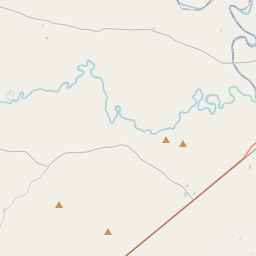Greater Riverside Cemetery







This cemetery has served the African-American community in Hearne and the old town of Hearne since 1894. The area was originally settled by farmers, many of whom brought slaves with them when they immigrated to Texas. Hearne, named for Christopher Columbus Hearne, was platted in 1868 and developed as a crossroads for rail traffic.This burial ground was originally named the New Colored Cemetery, though it was known by a variety of names over the years; it was most commonly called St. Mark's Cemetery until 1933, when it became known as Riverside Cemetery. The original burial ground was made up of twenty acres purchased by the Colored Cemetery Association. The Primitive Baptist Church donated an acre to the burial ground when they relocated from here in 1906, and St. Manuel Baptist Church added an additional three acres in 1948.The first known interment here was of Chaney Delila Henderson in 1896. Since that time, hundreds of burials have occurred here. The grounds hold an especially large number of military veterans, including those who fought in conflicts dating to the Spanish-American War. Among the cemetery's features are markers for members of the Mosaic Templars of American, a black fraternal association with few known chapters in Texas. The Greater Riverside Association formed in 1982 and maintan the 24-acre cemetery; the association also renamed the burial ground. Today, Greater Riverside Cemetery continues to serve as a testament to the rich African-American legacy in the community of Hearne.Historic Texas Cemetery-2007
As one of the most visible programs of the Texas Historical Commission (THC), historical markers commemorate diverse topics in Texas history, including: the history and architecture of houses, commercial and public buildings, religious congregations, and military sites; events that changed the course of local and state history; and individuals who have made lasting contributions to the state, community organizations, and businesses.
The Alamo, a mission in San Antonio, is perhaps the most famous historical site in Texas. It was the site of a key battle during the Texas Revolution in 1836.
In the early 1870s, ranchers began to settle in what is now Roberts County. The region's vast grasslands provided ample grazing opportunities for cattle, attracting ranchers from across Texas. The county was officially established in 1876, named after John S. Roberts, a significant figure in the movement for Texas statehood.
Throughout the late 19th century, cattle ranching dominated the local economy, and the population grew steadily. In the 1880s, the establishment of railroads in the region further facilitated the increase in trade and transportation of cattle, allowing for better access to markets outside the county. This growth continued into the 20th century, with the development of better irrigation techniques and the expansion of farming activities.
However, like many rural areas, Roberts County faced challenges during the Great Depression. The Dust Bowl of the 1930s devastated agricultural practices in the region, causing massive crop failures and forcing many residents to abandon their farms. The federal government's New Deal programs aimed to provide relief and recovery for farmers in the area, leading to the implementation of soil conservation measures and the construction of dams and reservoirs.
Since then, Roberts County has experienced periods of economic growth and decline. Today, the county's economy is still primarily based on agriculture, with cattle ranching, farming, and wind energy production being major industries. The county's rich history and dynamic present make it an interesting and important part of Texas' heritage.
Roberts County Timeline
This timeline provides a glimpse into the major events and milestones that have shaped the history of Roberts County, Texas.
- 1876: Roberts County is officially established by the Texas legislature.
- Late 1870s: Buffalo hunters begin to populate the area.
- 1882: The first post office, "Roberts", is established.
- 1890: The county population is recorded at 565 residents.
- Early 1900s: Farmers and ranchers settle in the area, establishing the agricultural economy.
- 1933: The Dust Bowl hits Roberts County, causing severe soil erosion and economic hardships.
- 1950s: Oil and gas exploration begins, leading to increased economic activity in the county.
- 1980: The county reaches its peak population of around 1,400 residents.
- 1990s: Population decline begins as job opportunities decrease.
- Present: Roberts County continues to be a rural community with a focus on agriculture and energy industries.